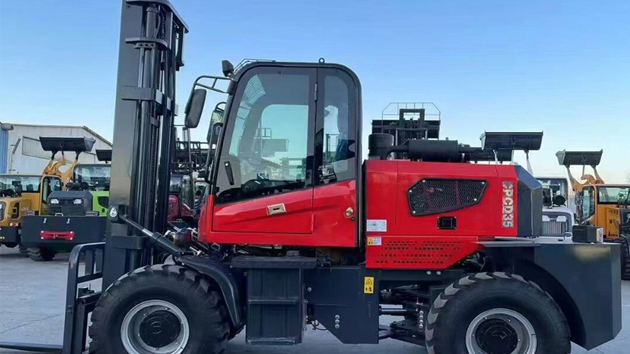The Future of Rough Terrain Lift Trucks in Industrial Applications
2025-07-05 03:40:24
Rough terrain lift trucks have become indispensable in industries such as construction, agriculture, and logistics, where uneven surfaces and harsh conditions are common. Unlike standard forklifts, these machines are engineered with reinforced tires, high ground clearance, and powerful engines to navigate rocky, muddy, or sloped terrains. Recent data from the Industrial Truck Association (ITA) shows a 12% year-over-year growth in rough terrain lift truck sales, reflecting their increasing adoption in demanding sectors.
One of the key innovations in rough terrain lift trucks is the integration of advanced hydraulic systems. These systems provide superior load stability and precise control, even on unstable ground. For example, manufacturers like Caterpillar and JLG have introduced models with adaptive suspension technology, which automatically adjusts to surface irregularities. This not only enhances safety but also improves efficiency, reducing downtime caused by equipment failure. The global market for rough terrain lift trucks is projected to reach $4.8 billion by 2027, according to a report by MarketsandMarkets.
Another critical factor driving the popularity of rough terrain lift trucks is their versatility. These machines can handle a wide range of attachments, from pallet forks to crane arms, making them ideal for diverse applications. In the oil and gas sector, for instance, rough terrain lift trucks are often used to transport heavy drilling equipment across remote sites. Their ability to operate in extreme weather conditions—such as heavy rain or snow—further solidifies their role in critical industries.
Sustainability is also shaping the future of rough terrain lift trucks. Leading manufacturers are investing in hybrid and electric models to reduce emissions and operational costs. For example, Toyota recently unveiled an electric rough terrain lift truck with a lithium-ion battery that offers 30% more runtime than traditional diesel models. Government regulations on carbon emissions are accelerating this shift, with Europe and North America leading the adoption of eco-friendly alternatives.
Despite their advantages, rough terrain lift trucks require specialized training for safe operation. OSHA reports that improper use accounts for nearly 15% of forklift-related accidents annually. Companies must invest in operator certification programs and regular maintenance to mitigate risks. As technology evolves, features like collision avoidance systems and telematics are expected to further enhance safety. With continuous innovation and growing demand, rough terrain lift trucks will remain a cornerstone of industrial operations in the years ahead.












